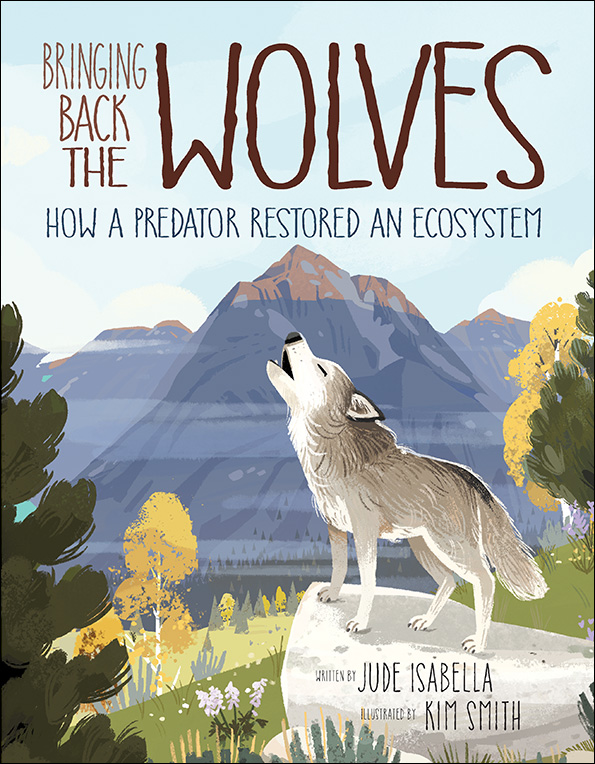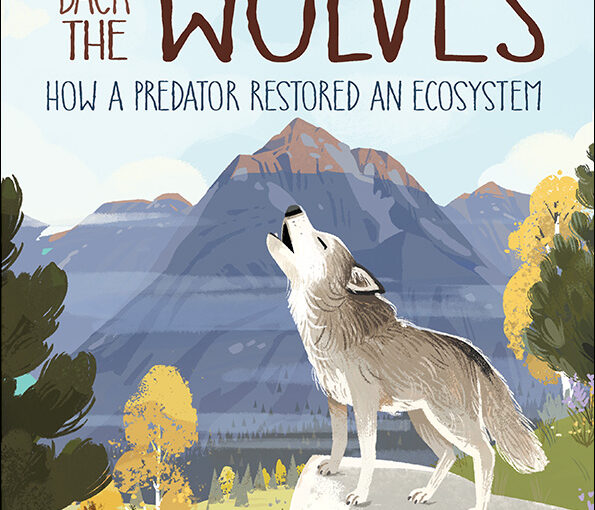Middle school students do not need to fear illustrated books and Bringing Back The Wolves is a great example of that. In 1926 Yellowstone National Park has so many wolves that the government offered a bounty for each one that was killed. Around that time thousands of people moving west and wolves were the apex predator to beat. They were attacking cattle with ease which drove a wedge of fear to those farmers who were trying to feed the massive amount of people. Bringing Back The Wolves takes a surprisingly detailed look at the unforeseen effects of these actions and how that environment rebounded.

This is a smart book that treats its audience like the readers that they are. I vaguely remember when the wolves were returned to Yellowstone in the mid 1990’s. I didn’t know why they weren’t there, but did think for a moment that such a skilled hunter and wild animal would not be in such a large land area like that. It turns out that in addition to being an apex predator they’re also a keystone species. When a keystone species is suddenly not in their environment, a myriad of things both direct and indirect start to happen.
In the case of Yellowstone National Park it meant that it was party time for the elk. They were free to roam the land and reproduce at numbers they could only dream about. Unfortunately this meant that the grasslands were suddenly public enemy number 1. But, it’s just grass, right? Yes, but the bison also graze on some grass. These lumbering beasts are North America’s largest land animal and while it wasn’t common for wolves to make a meal out of one, it wasn’t impossible. Now, the bison can eat without any issue, but the elk are reproducing too quickly and eating all of their food.
This also impacted bears and these omnivores certainly had other options, but berries were one of their favorite. With fewer bears eating berries, there were fewer berry bushes. All of this led to fewer places for smaller creatures like mice or rabbits to hide, which meant that there wasn’t enough food for owls, hawks or eagles. Even the smaller pollinators had their food impacted. The beavers also didn’t have enough food to eat because the elk kept eating all of the trees.
The point to Bringing Back The Wolves is that one thing impacts another. This non-fiction story is beautifully illustrated by Kim Smith. The realistic illustrations add to the text by Jude Isabella in a way that makes kids want to read more. It’s well researched and smart, yet not too smart in that it’ll scare away upper elementary students. Because of that, the text in the book is perfect for book reports that upper elementary readers and up will be required to do. Those ages will be able to understand the text and the illustrations will invite them to read more. For those readers, there is an index of keywords that they might need to reference, list of websites and other books with more information on the topic.
Bringing Back The Wolves is by Jude Isabella with illustrations by Kim Smith and is on Kids Can Press.
There are affiliate links in this post.





 Facebook
Facebook Twitter
Twitter Flickr
Flickr GooglePlus
GooglePlus Youtube
Youtube